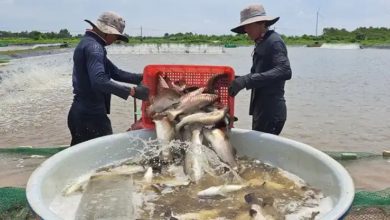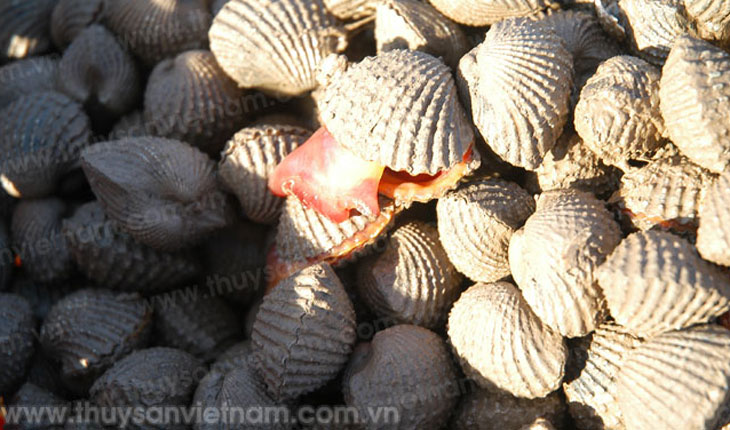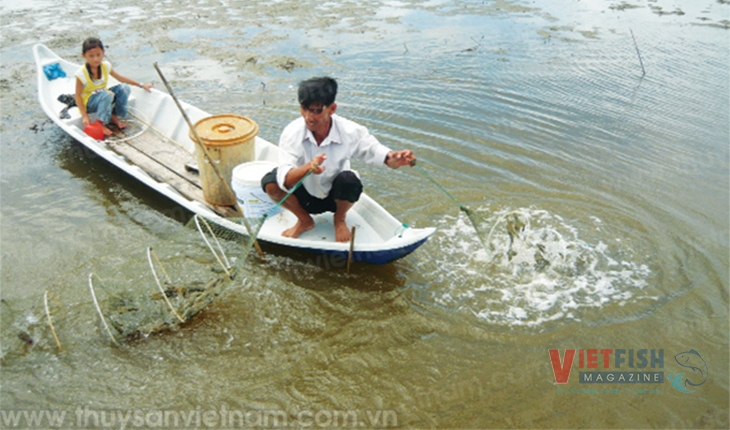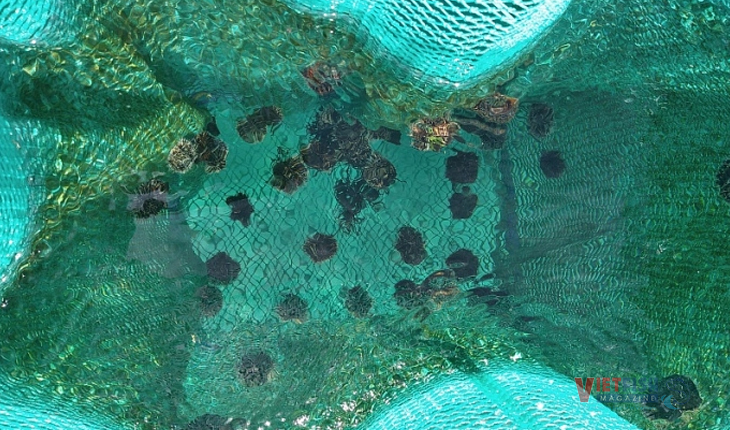Zero water exchange super-intensive indoor shrimp production
INTRODUCTION
Viet-Uc runs one of the largest shrimp hatchery operations in the world, at present producing circa 15 billion PL per year. The group’s production capacity is around 40 billion PL per year distributed over 7 hatchery premises. Furthermore, Viet-Uc is the only hatchery in Vietnam licensed to operate a breeding and genetics program.
Since 2015, Viet-Uc has been working on the expansion of its activity into shrimp grow-out operation. Viet-Uc’s grow-out system is highly intensive; conducted in ponds of 500m2 each. Today Viet-Uc disposes about 600 ha of land on two sites in Central Vietnam (Bình Định and Quảng Ninh province), and is operating its shrimp grow-out facilities in two other site in the Bạc Liêu province of the Mekong delta (50 and 315 ha). By 2020, Viet-Uc grow-out operations are expected to cover 1,000 hectares, with circa 550 greenhouses or 10,000 ponds.
Viet-Uc’s approach to intensive large-scale farming already results in higher densities, increased harvest volumes and better and cleaner shrimp. The company wants to show that with adequate investment and better management, intensive farming systems can result in better products, higher market prices and an improved image for Vietnam’s shrimp products. Sharing this same philosophy INVE Aquaculture works closely with Viet-Uc’s hatchery and farm management to optimize its operations and protocols. The grow-out expansion strategy of the company resides in 100% indoor production systems, with a sustainable yield and zero water exchange protocols.
Globally, every year for the past 30 years, the risk of contamination due to disease has increased; for the past 15 years, drastic increases in bacterial related diseases have devastated many farms and families. The investment in indoor facilities in and of itself represents better biosecurity than outdoor ponds by substantially reducing contact with environmental contamination. But indoor protection should be considered only as a first step; indeed indoor farming will not reach its full biosecurity potential as long as water is exchanged in the ponds. After post larvae, contaminated water remains the vector of highest risk in prawn farming. To reach the highest level of bio-security for indoor farming, it is judged essential to control the production of shrimp with no entry of water into the pond from stocking through to harvesting.
INVE is supporting Viet-Uc with continuous on-site assistance. This is realized through the INVE Technical Support Team that includes shrimp culture experts enjoying an accumulated experience of over 185 years. Also, INVE has today a complete portfolio of high quality products specifically developed to support shrimp grow-out production.
APPROACH & GENERAL SETUP
Since mid-2015, INVE and Viet-Uc have realized several commercial-scale production runs. These were designed to introduce the high density zero-water exchange protocols of INVE, together with the use of the INVE grow-out product portfolio. The know-how transfer by INVE to Viet-Uc met Viet-Uc’s production requirements and performed well under local conditions, resulting in a simple, easily replicable production system, which is indispensable for the multiple expansions planned by the Viet-Uc grow-out program.
As of today, a total of five full-scale production cycles have been conducted, totaling over 100 production ponds. The first couple of trials were designed to secure the farming targets using zero water exchange protocols, first experimentally and then commercially. Following the success of those, several runs followed to increase farming outputs with higher stocking densities. This article intends to summarize the output, explaining the approach and its results.
All the grow-out production has been realized in 500m2 fully lined ponds, 1.2m deep. The aeration system is composed of 1” aero-tube diffusers; air supplied by root blowers. Two long-arm paddle wheels were installed to use as back-up in case of failure of the air blower.
The water used was previously disinfected and treated to ensure the absence of pathogens. All ponds were stocked with the selected genetic lines of post-larvae (PL10) supplied by the Viet-Uc hatcheries. High quality shrimp feed of 40% protein was used. Feed was distributed manually till 1g (crumble), then 24/24H pellet feeding was given via the use of automatic spinner feeders positioned in the center of the ponds.
The main principle of the INVE zero-water exchange protocol is based on bacterial competitive exclusion, via the use of the INVE selected probiotic bacteria. Also it should be noted that shade cloth was installed over the ponds to minimize competition and deviation of the physico-chemical parameters due to the phytoplankton population.
TRIALS BASELINE PROTOCOL
 Prior to stocking, all the material and pond surfaces were disinfected with a solution of Sanocare®PUR, to ensure the complete removal of possible pathogens, including bacterial biofilms. After the first pond was fill, no water was added or exchanged into the tanks for the entire period of the crop, cf. zero water exchange protocol.
Prior to stocking, all the material and pond surfaces were disinfected with a solution of Sanocare®PUR, to ensure the complete removal of possible pathogens, including bacterial biofilms. After the first pond was fill, no water was added or exchanged into the tanks for the entire period of the crop, cf. zero water exchange protocol.
During production, two products were used as inoculum of beneficial selected bacteria, or probiotics : the Sanolife®PRO-W for water conditioning, and Sanolife®PRO-2, used as feed coating to act at the level of the shrimp gut bacterial ecology.
Both products include a combination of bacteria, with multiple targets:
Bacterial competitive exclusion for space against Vibrio sp. in the water and biofilm colonization of pond surfaces (PRO-W) and gut internal membranes (PRO-2),
Bacterial competitive exclusion for food source of Vibrio sp. (cf. AHPND) via the reduction of organic waste production (PRO-W) ,
Bacterial competitive exclusion for food source of Vibrio sp. (cf. AHPND) via an improved control of multitrophic nitrification bio-reactions (PRO-W).
The optimization and control of the multitrophic nitrification processes remains until today the major limitation to the development of zero water exchange protocols around the globe. Indeed, usual production systems of this kind, commonly referred to as biofloc production systems, use mainly the heterotrophic nitrification bacterial processes, working with a C/N ratio via the addition of external carbon sources, such as molasses, to the ponds. This nitrification pathway alone is not sufficient to digest all nitrogen involved in a shrimp pond with zero water exchange. Ammonia spikes, followed by nitrite spikes often impact the overall productivity of such systems.
In addition, within the INVE protocol, special focus is brought to the first month of farming, when the pond ecology is developing. During this time, a high quality INVE nursery feed supplement (Sano®S-PAK) is used for the first feeding of each day. S-PAK also includes a complete range of selected immunostimulants to stimulate the shrimp defenses against environmental stress (cf. density).
Subsequently, the immunostimulants present in the Sano®S-PAK are given to the animals in the form of the supplement Sano®TOP-S, which is coated onto the feed.
TRIALS RESULTS
The Graph 1 resume the average growth obtained during the different trials, for different stocking density.
GRAPH 1
At 250 PL/m2 the shrimp reached an average size of 20g in 90 days; at 500 PL/ m2 the shrimp reached an average size of 20g in 100d; at 700 PL/ m2 the shrimp reached 17g in 100 days.
The Graph 2 presents the evolution of the average nitrogen concentrations, for NH3-N and NO2-N, during the trials.
GRAPH 2
We can observe a complete control of the nitrogen concentrations throughout the farming process. NH3-N is maintained below a concentration of 0,5ppm (or mg N/L), and NO2-N below a concentration of 2ppm. The maximum concentrations of both are observed during the first two weeks of culture, as the pond ecology develops and adapts to the shrimp culture system. It confirms the special attention that farmers need to give to the ponds during the first month of culture. The use of superior quality feed to be able to feed less, but feed better, is essential to optimize this installment of the multirophic digestion.
This nitrogen control removes all need for water exchange and bottom siphoning, which increases considerably the biosecurity of the production system while lowering the production cost at the same time. The lower power consumption is mainly due to the absence of water pumping for water exchange. Costs are further reduced as less manpower is needed, due to absence of bottom siphoning and pump operation and maintenance.
With a stocking density of 250 PL/m2, the farming process results in the production of 20g shrimp in approximately 90 days, with a survival rate of 75% and a resulting FCR of 1.3. Considering the complete absence of water renewal, and the indoor production, the impact of environmental variables caused by the meteorological events is greatly reduced, resulting in optimal consistency of the results shown above for the different experimental and commercial trials realized.
On the other hand, the control of the water quality, via the control of nitrogen accumulation and the use of high quality probiotics and immunostimulants, greatly reduces the environmental stress on the animals. The direct consequences of this fact are a reduction in the size variation at harvest.
To date, the optimal economic output of the INVE protocols applied at VIET-UC resulted from a stocking density of 250 PL/m2. The stocking of 200% more animals (cf. 500 PL/m2) resulted in a productivity increase of only +150%. With superior stocking density (cf. +280% with 700 PL/m2), productivity increase was +165%. The growth, survival and FCR differences between stocking density are minimal (<5%); the accumulation of these together results in a lower economic return on the investment, even with increased productivities. The main factors responsible are the increase in both the PL cost and the feed cost, and the longer production time.
WHAT´S NEXT
The results of the VIET-UC/INVE collaboration have achieved the expected targets for the indoor environment, without the requirement of any new water introduction to the production cycle from stocking to harvest. This substantially reduces the risk of contamination, giving optimum biosecurity levels for the activity, and securing the investment. This fact also results in lower size variation, and highly consistent shrimp quality.
VIET-UC grow-out expansion includes the complete integration of all shrimp culture aspects. The company has already completed a state of the art feed production factory, and they are working on the construction of their processing plant.
The development program of VIET-UC also includes social projects to help small farmers in Vietnam achieve more consistent production, via the use of VIET-UC genetically selected PLs, high quality improved feed, and technology transfer that includes on-site support. INVE will continue assisting VIET-UC in these developments, with the shared goal of making shrimp farming a more sustainable activity than what it is today.
An INVE Case Scenario at Viet-Uc, Vietnam
By / Manuel Poulain









We want to start supper insentive indoor shrimp farm in Sri Lanka. We need the quotation for the entire cost such as building costruction cost, indoor farm cost, installation cost and other cost.
thanks and regards
K.Sathes
Colombo-12
Sri Lanka.
+94777319475